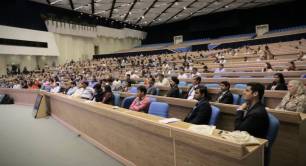Gender lens investing in Asia: challenges and opportunities
As the Sankalp Forum comes to Southeast Asia for the first time. On the agenda is gender lens investing – Ellie Ward explores the opportunities and challenges for this field across the continent.
First up, what constitutes an investment made with a gender lens? The Criterion Institute – a leading organisation in this field based in the US – identifies three primary objectives that the investment could aim to achieve:
- Investments that increase access to capital for women entrepreneurs and businesses that have women in leadership positions.
- Investments that promote gender equity in the workplace by investing in private sector companies with leading gender policies that also extend across their supply chains.
- Investments that increase the number of products and services that benefit women and girls by directing capital to socially responsible businesses that develop and offer these products and services.
Gender lens investing is ultimately about integrating a gender analysis into financial analysis, which evidence shows helps make better investment decisions. For example, "in the United States, the average venture-backed company run by a woman had annual revenues 12% higher than those run by men using one third less committed capital," according to research by Illuminate Ventures.
And "Fortune 500 companies with the highest percentages of women board directors outperformed those with the least by 53% return on investment", according to Catalyst.
Senior vice president at U.S. Trust Jackie VanderBrug says, “This is a lens and not a limitation.” The lens “helps you see opportunity and mitigate risk” she continues.
Having identified that much of the research into gender lens investing had been primarily focussed on activity in the US and Europe, the United States Agency for International Development (USAID) commissioned a report to assess the landscape in Asia.
USAID has long been focussed on the empowerment of women and in the past has invested in developing the now very commercialised microfinance industry to help achieve this.
Kofi Owusu-Boakye is the private capital advisor for East Asia, and the ASEAN economic affairs officer at USAID. He says the Agency is “at the point where we need to find new ways to address the continued disparity between women’s economic participation and the lack of investment there as you move up the chain to small and medium enterprises”.
Among the challenges preventing the advancement of gender lens investing are prevailing prejudices. Owusu-Boakye recalls a meeting with a PHD student researching this subject, who told his team a story about an investor who would not fund a certain “enterprise led by a woman” because “that enterprise was not fundable without a man on its team”.
He asks: “I wonder how many more such decisions are being made? We need to provide more evidence to show these disparities exist.”
Owusu-Boakye’s colleague at USAID Laura Parrott explains her team often hear that "there aren’t any women to invest in" or "we’re having trouble finding women".
She continues: “We know to a certain extent that’s just not true. It’s about changing the underlying value placed on women. This is a cultural issue and of course every country has its own cultural context."
The Gender Lens Investing in Asia report – which was led by Patty Alleman, senior gender advisor for USAID, and Joy Anderson, president of the Criterion Institute – identities four key opportunities to develop gender lens investment activity across Asia.
- Build the evidence base: A model investment portfolio needs to be developed to show how capital flowing into gender lens investments across a variety of asset classes and investment vehicles translates to tangible social benefits for women and society and financial benefits for investors.
- Make life easier for investors: Build the infrastructure including platforms and alliances that facilitate institutional and individual investors’ ability to move capital to gender lens investments.
- Stronger in numbers: GREAT Women and the Philippine Commission of Women are currently working together to provide a marketing and branding platform to help women entrepreneurs gain access to more markets in different geographies. The report concludes that similar collaborations will be necessary in order to foster greater collaboration among entrepreneurs, key partners, and start-ups. They will also increase entrepreneurs’ exposure to capture investment capital.
- Accelerate: Accelerator programmes such as those run by Spark and UnLtd are an effective way of supporting start-up growth. There needs to be more programmes with a gender lens.
Looking ahead Owusu-Boakye predicts: “The market is sitting on a huge opportunity in this space. The first movers will gain the advantage.”
Aparajita Agrawal is the director of the Sankalp Forum, which is one of the initiatives run by Intellecap, and agrees that momentum around gender lens investing in Asia is set to increase.
“In the future, we see ourselves diving deeper into analysis, measurements, and metrics; bringing more women investors to the fore; and catalysing more capital towards women-impact businesses in Asia and Africa,” she concludes.
The Sankalp Forum Southeast Asia Summit takes place on November 19th and 20th in Jakarta, Indonesia. To find out more, please click here.
Photo credit: Image Catalog



